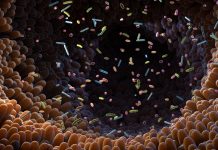Didier Coeurnelle, Co-chair at Heales (Healthy Life Extension Society) and member of the board at the International Longevity Alliance, discusses developments in longevity research, promoters and barriers to healthy aging, and the importance of preventative approaches to care
The pursuit of healthy longevity – extending not just lifespan but also overall health – is a growing priority as the global population ages. Strategies to support healthy aging are vital for individual wellbeing and societal prosperity. This editorial examines the current state of longevity research and advocacy, key barriers and enablers, the role of preventative healthcare, and the potential of new rejuvenation therapies.
Longevity research
Longevity research is rapidly advancing. However, biological limits to lifespan extension are not easy to overcome. The average lifespan has increased and is now approximately 73 years globally. (1) The average lifespan exceeds 80 years in many European countries and some other countries. However, maximal lifespan does not progress. Jeanne Calment, who died in August 1997 at the age of 122, is still (almost certainly) the oldest person who has ever lived. Nearly 30 years later, in May 2025, Ethel Caterham, the world’s oldest person, is ‘only’ 115 years old. (2)
The field of geroscience focuses on improving health during aging. At the moment, lifestyle and environmental factors have a greater impact on health than genetics. Despite progress, significant barriers remain. Disparities in income, education, and employment lead to unequal access to healthcare, nutrition, and safe environments. Environmental factors, such as pollution and climate change, also hinder healthy aging. Healthcare disparities contribute to poorer health outcomes and shorter lifespans for certain groups. The difference in life expectancy between rich and poor in one country, like the United States, is about ten years (3) when the average difference between women and men is ‘only’ about five years at the world level. (4)
Based on current knowledge, key enablers of healthy longevity include lifestyle factors such as a balanced diet, regular exercise, avoiding smoking, moderate alcohol consumption, and adequate sleep. Strong social connections, a sense of purpose, and mental stimulation are also crucial.
The importance of preventative healthcare to healthy longevity
Transforming health systems to prioritize the prevention and treatment of diseases associated with aging is essential. This shift involves personalized care, patient education, the integration of technology, and multidisciplinary teams.
It is also important to note that today, humans are exposed to a growing diversity of contaminants daily, including microplastics, PFAS (per- and polyfluoroalkylated substances), heavy metals (such as lead, mercury, or cadmium), pesticides, and various endocrine disruptors (such as bisphenol A or certain phthalates). Even at low doses, these substances can have cumulative effects on the body, affecting different biological systems. Chronic exposure raises concerns about its impact on health, quality of life, and, consequently, life expectancy. (5)
However, what has been mentioned so far in this editorial is about what is possible given our current knowledge. Fortunately, scientific and medical research enables us to envision far longer and healthier lives in the future. One day, we may be able to diminish senescence thanks to new therapies radically. In this domain, like in many others, AI can help us. We can utilize it efficiently and effectively to enhance our resilience thanks to science.
Repurposing existing drugs offers a potentially rapid route to impacting human healthspan. Metformin, a widely used diabetes medication, is under intense investigation for its positive effects, including potential anti-aging properties observed in preclinical studies. (6) Similarly, rapamycin, an immunosuppressant, has shown lifespan-extending effects in various model organisms, sparking interest in its potential for human application, albeit with careful consideration of its side effect profile.
Beyond single-agent therapies, the concept of combination pills targeting multiple aging pathways simultaneously is gaining traction. (7) Researchers hypothesize that synergistic effects from combining compounds with different mechanisms of action could yield more significant benefits than individual treatments.
Longevity biotechnology
The frontier of longevity research also encompasses advanced biological interventions.
Gene therapy, with its potential to modify the expression of age-related genes, holds immense promise, although significant technological and safety hurdles remain. (8)
Stem cell therapy, focused on regenerating tissues and organs damaged by aging, is another exciting area, with ongoing research exploring various stem cell types and delivery methods. (9)
NAD+ boosters, such as nicotinamide riboside (NR) and nicotinamide mononucleotide (NMN), aim to replenish declining levels of this crucial coenzyme, which plays a vital role in cellular energy metabolism and DNA repair. (10)
Senolytics are another promising field, suppressing senescent cells that are detrimental to aging humans. (11)
Therapies related to plasma, (12) exosomes, (13) and other components of the blood are already rejuvenating animals and seem to have positive effects on us.
The future of longevity is promising, but uncertain. We need more public and private investment for radical ideas, more proactive initiatives, laws making clinical trials with older, well-informed people easier, more open sharing of health data, and longevity knowledge. And we need a paradigm shift: from trying to understand aging and making it less painful to trying to stop senescence and even reverse it.
References
- World Health Organization. GHE: Life expectancy and healthy life expectancy. WHO.
- Associated Press. (2024, April 5). 115-year-old British woman, now the world’s oldest, gives her recipe to long life.
- News Medical. (2024, May 2). Income inequality linked to 10-year gap in life expectancy, study reveals.
- Freethink. (n.d.). Why do women live longer than men?
- Endocrine Society & IPEN. (2024). Endocrine-disrupting chemicals: Threats to human health.
- Kritchevsky, S. B., & Espeland, M. A. (2018). Trials of Geroscience-based therapeutics – The Targeting Aging with Metformin (TAME) example. Innovation in Aging, 2 (Suppl 1), 823.
- Huang, X., Liu, J., Withers, B. R., Samide, A. J., Leggas, M., & Dickson, R. C. (2013). Reducing signs of aging and increasing lifespan by drug synergy. Aging cell, 12(4), 652–660.
- Kaiser, J. (2021). Gene therapy beats premature-aging syndrome in mice. Science, 371, 114-114.
- Al-Azab, M., Safi, M., Idiiatullina, E. et al. (2022). Aging of mesenchymal stem cell: machinery, markers, and strategies of fighting. Cell Mol Biol Lett, 27, 69.
- Poljšak, B., Kovač, V., Špalj, S., & Milisav, I. (2023). The Central Role of the NAD+ Molecule in the Development of Aging and the Prevention of Chronic Age-Related Diseases: Strategies for NAD+ Modulation. International Journal of Molecular Sciences, 24 (3), 2959.
- Chaib, S., Tchkonia, T. & Kirkland, J.L. (2022). Cellular senescence and senolytics: the path to the clinic. Nat Med, 28, 1556–1568.
- Horvath, S., Singh, K., Raj, K., Khairnar, S. I., Sanghavi, A., Shrivastava, A., Zoller, J. A., Li, C. Z., Herenu, C. B., Canatelli-Mallat, M., Lehmann, M., Habazin, S., Novokmet, M., Vučković, F., Solberg Woods, L. C., Martinez, A. G., Wang, T., Chiavellini, P., Levine, A. J., Chen, H., … Katcher, H. L. (2024). Reversal of biological age in multiple rat organs by young porcine plasma fraction. GeroScience, 46 (1), 367–394.
- D’Anca, M., Fenoglio, C., Serpente, M., Arosio, B., Cesari, M., Scarpini, E.A. and Galimberti, D. (2019). Exosome Determinants of Physiological Aging and Age-Related Neurodegenerative Diseases. Front. Aging Neurosci. 11:232.











